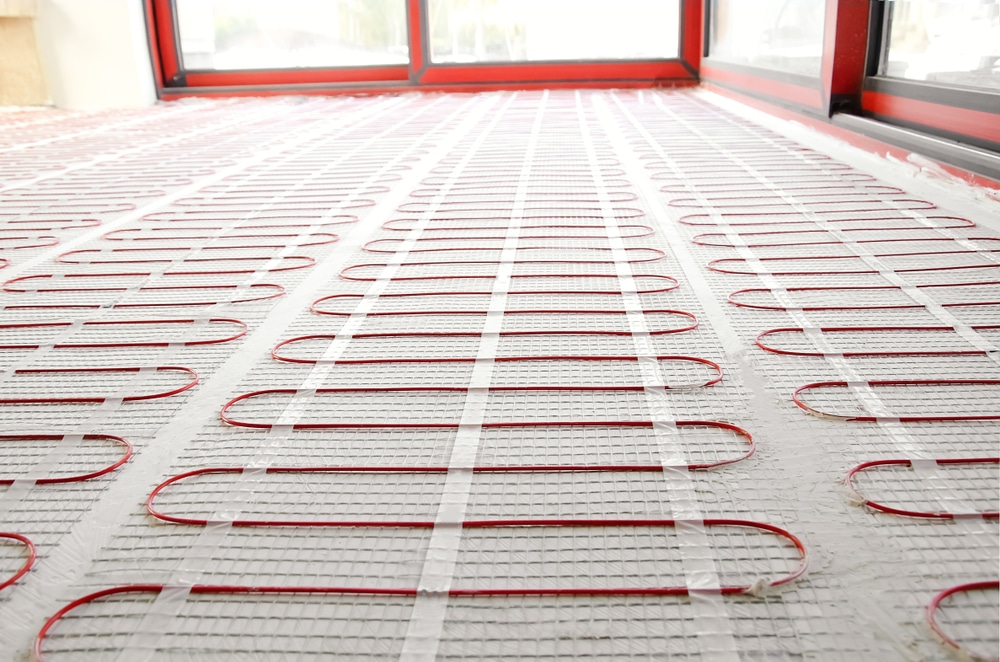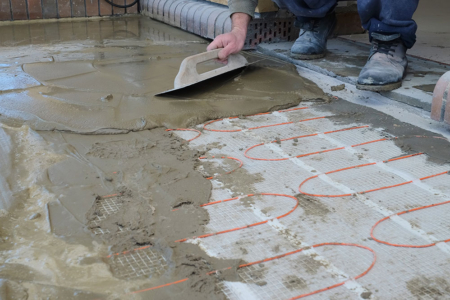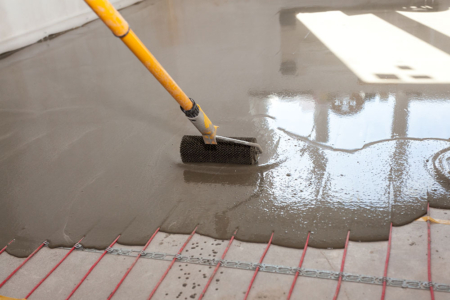If you are thinking of installing underfloor heating in your home, then it means that you will have a warm floor to walk on and no more cold feet!
However, there are a number of options available with such a solution so read on in our electric underfloor heating guide to find out more.
Electric Underfloor Heating Guide: Why Consider Loose Wire?
By Stephen Holt, Technical Manager since 1996
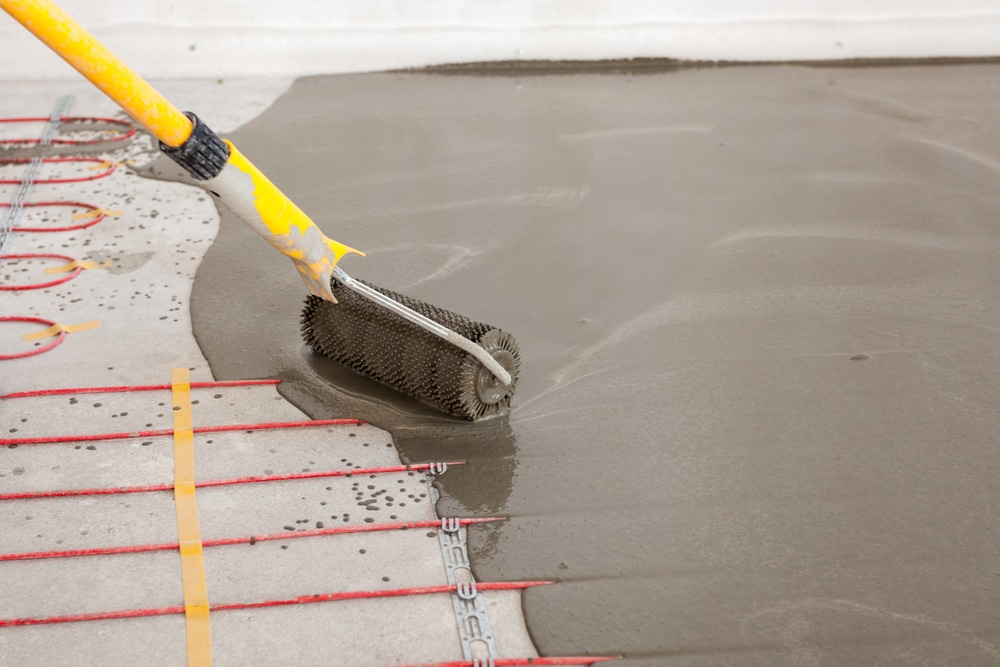
Why Do People Choose Underfloor Heating?
Underfloor heating will heat the whole room, and it can allow more accurate and greater temperature control than traditional central heating systems. Underfloor heating systems also make the room feel warmer at lower air temperatures due to the way the heat rises evenly across the whole space. With underfloor heating, each room has an individual thermostat, allowing you to only heat the rooms that need to be heated, saving you power and money.
Investing in electric underfloor heating is something that can be so worthwhile, as it can make a huge difference to the whole of your home. But there are a number of options you need to consider before you can make an informed choice on the best solution for your particular circumstances. For example, the best option may be to install heating mats or conversely choosing loose cable underfloor heating may suit your circumstances better.
What is Electric Underfloor Heating?
Electric Underfloor Heating consists of a system of electric heating cables laid under the floor connected to the mains electricity. In order to keep the heating cables as small as possible, they are constructed as ‘series resistance’ cables which means they come in a range of fixed lengths.
There are two main types of cable system: Loose wire and Heating mats. The cable for loose wire systems comes on a reel which is laid out across the floor and fixed in place with adhesive tapes or clipped into slotted rails. Heating mats are constructed by pre-fixing the heating cable to an open weave mat, around 1 metre in width, which can then be rolled out across the floor.
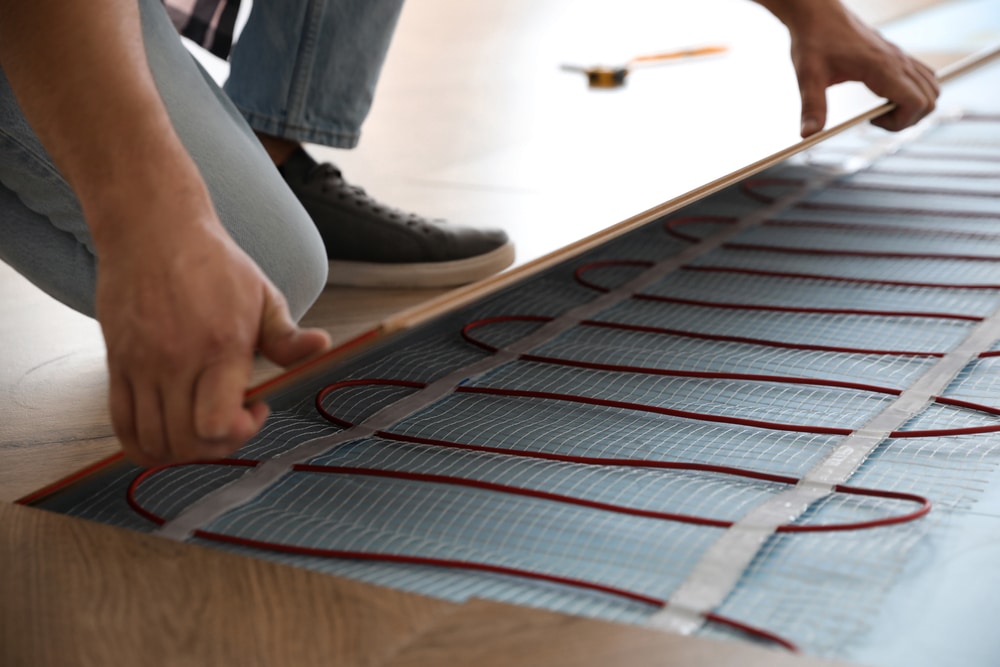
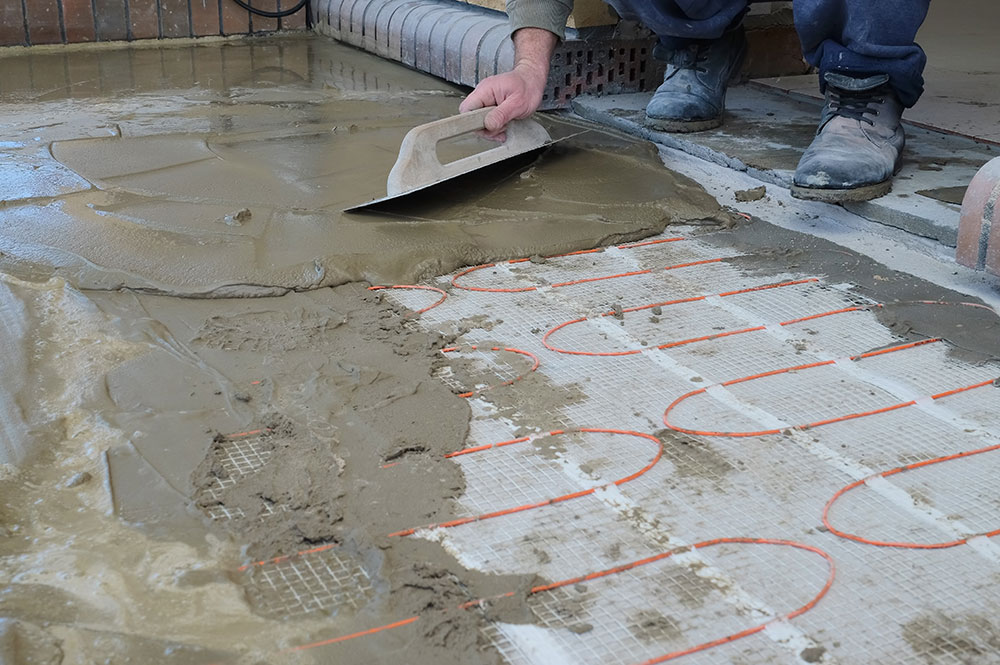
Electric Underfloor Heating Installation
The first thing to ensure is that under the heating cable system is thermally insulated. You want the heat to transfer upwards into the room, not down into the ground. The loose wire heating cable or heating mat is covered in screed or self-levelling compound before the floor finish is laid on top. There are moisture barriers added around the electric heating cables as well to prevent water ingress.
Each room is controlled by its own thermostat and then the heating cable system can be connected up to the mains electricity. Initial heating should be done slowly so that the floor matrix is not subjected to sudden thermal shocks that could cause cracking.
Advantages & Disadvantages of Loose Wire Underfloor Heating Compared to Heating Mats
Loose wire underfloor systems and heating mat systems each come with their own benefits and drawbacks.
- Loose wire systems take much longer to install as each cable run has to be laid by hand.
- Mat systems can simply be rolled out across the floor in strips.
- Loose wire cables can be more easily laid in complex shaped rooms to provide even heating across the whole area.
- Mat systems are difficult to fit in anything except rectangular rooms.
- You can vary the spacing in a loose wire system to provide more or less heat in specific areas of the room.
- Electric underfloor heating systems work particularly well under tiled floors as carpet can block the heat transfer. Warm tiles under your feet in the bathroom are especially comforting.
Scott Precision Wire has been providing conductors for the heating element in electric underfloor heating systems since their inception. We can offer them in the full range of alloys and in solid, bunched or concentric stranded constructions. Contact us for all your resistance conductor needs.
